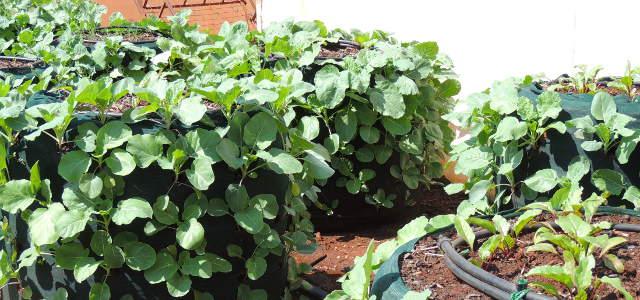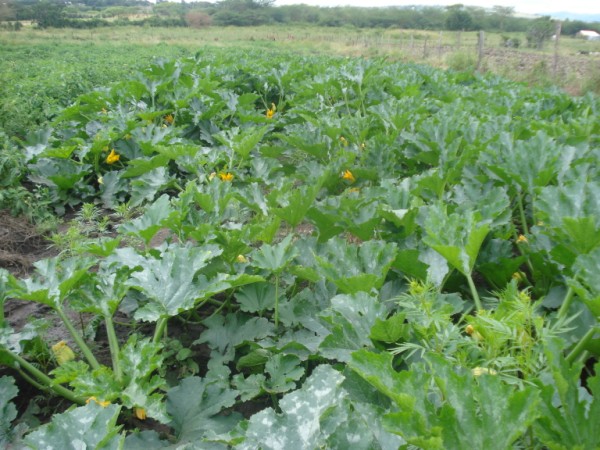People living in urban areas can reduce the cost of buying food by half if they use vertical bags to grow vegetables all year round in their backyard gardens or roof tops.
According to a report released by global market research and consulting firm Ipsos Synovate in March this year, the high cost of living (35 per cent) and hunger (14 per cent) are some of the most critical issues facing Kenyans besides the rate of unemployment (39.1 per cent).
A survey by Nation Newsplex in 2016 revealed that for every Sh100 spent by a Kenyan, Sh45 goes towards purchasing food and drinks.
A majority of Kenyans in urban areas (56 per cent) buy food from supermarkets compared to 35 per cent who but from kiosks and groceries according to a survey releases by mobile phone pollster Geopoll in 2015.
All is not yet lost as many urban residents can embrace urban farming that enables them to utilize the small space available due to limited land. Using shade net bags to grow crops minimizes land and water use.
Related
Urban youth ditch ties for overalls and gumboots
Milk processing plant takes urban dwellers back to farms
City families fight biting food shortage with urban gardens
Real impact is a Thika based non-governmental organization that helps farmers adopt modern farming techniques especially now that land is becoming smaller and smaller. According to the farm manager, Julia Laitore, the technology of using net bags to grow crops can help meet current and future demands of food in Kenya and beyond.
“We help farmers adopt new farming technologies so as to enable them sustain their production, many people are moving to urban areas to look for jobs and the demand for vegetables is really high” says Julia.
The NGO came up with new technologies of growing vegetables and breeding animals in a small scale way whereby big land is not required.
“At our farm here, we plant our vegetables in bag gardening where one bag, 1 meter long is used to plant 100 plants vertically at a go, with only 20 liters of water to being used to irrigate one bag holding the plants per week” said Julia. The bags are available in large and medium sizes.

With this technology, farmers are assured of fresh vegetables all year round by planting in sacks/bags. A single person can cater for 100 bags watering them thrice a week. The process needs no weeding. A farmer can also plant different crops in one bag to reduce the chance of pest invasion. This method can be adopted by the elderly as it not labor intensive.
Sack nets last longer than the normal ones that rot easily. One sack has a lifespan of ten years and uses little water on drip irrigation with minimal labor required.
Procedure for vertical bag farming using bags
Mix the soil and manure. Add 3kg of DAP and lime to the mixture. Thoroughly mix the bag ingredients.
Spread the bag to identify the top, bottom and outer sections. Turn the bag inside out and gather it in the middle part of the bottom part. Place the bag on the ground right side oout and start filling the bag with the mixed media.
Ensure you have a stable base at the bottom and that all holes are visible. Continue filling your bag until you have a well filled upright bag. Wet the bag with 30 liters of water and start planting on the sides of the bag. Place the curled section of the 16 mm riser pipe fitted with button drippers on the top of your bag.
You can plant leeks, coriander, lettuce, carrots, kales, tomatoes, e.tc. On the top section and you have your very own bag garden?
All urban dwellers can try this type of farming as it does not only utilizes space but also minimizes malnutrition by ensuring families are on a balanced diet.
Julia advises farmers to plant different types of vegetables in their farms as each specific vegetable has its own nutrition value.
Write comment (0 Comments)




 Part of Harrisom Muriuki's onion farm at Karai in Naivaha. He has alredy harvested 1.5 tonnes of the crop and sill expecting to harvest one tonne at the end of the season. Photo courtecy.
Part of Harrisom Muriuki's onion farm at Karai in Naivaha. He has alredy harvested 1.5 tonnes of the crop and sill expecting to harvest one tonne at the end of the season. Photo courtecy. 











